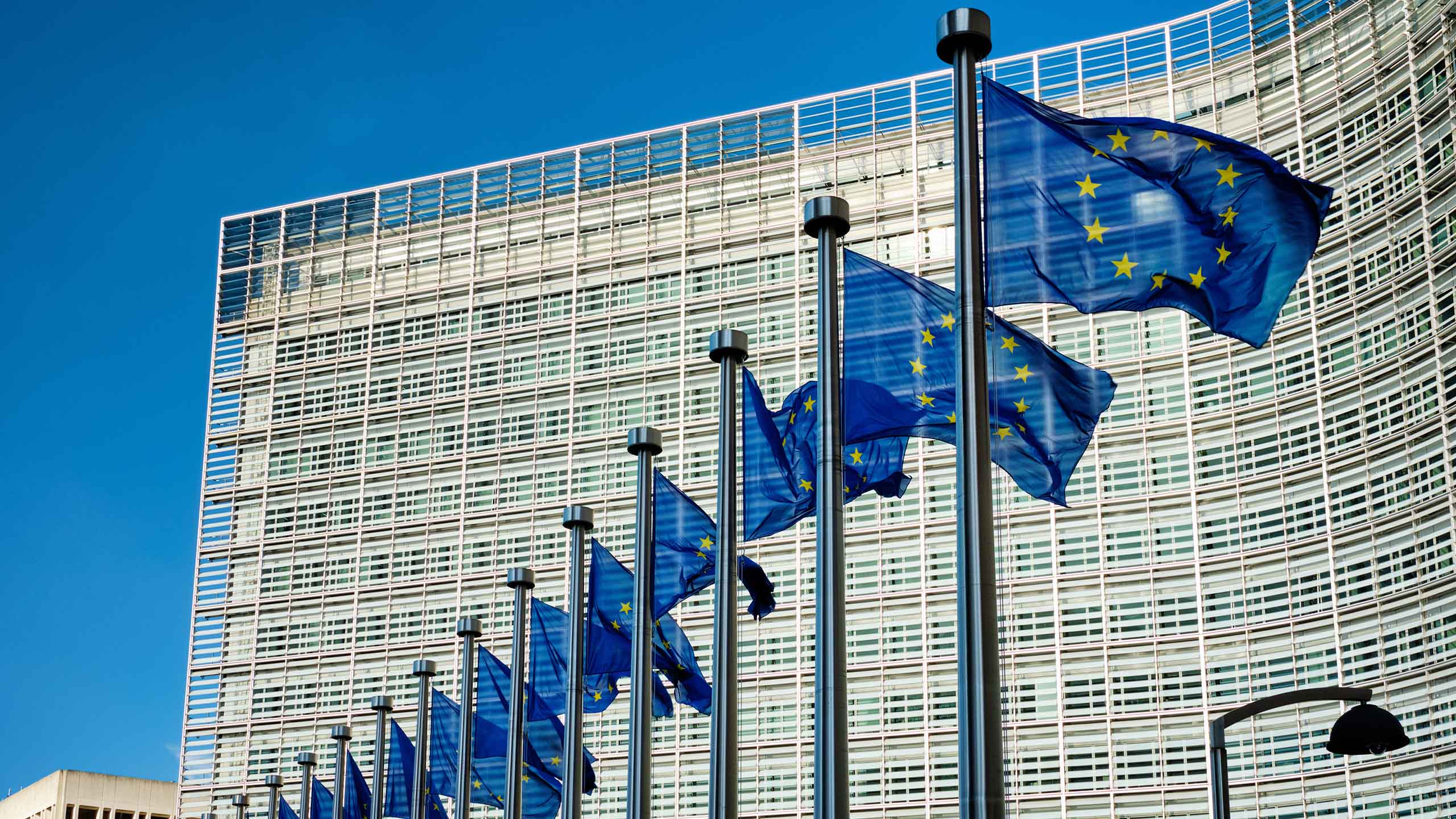The week that was …
Economic round-up
Federal Reserve minutes
Minutes from the US Federal Reserve’s June meeting showed “a couple” of officials believed interest rates could be reduced this month. The majority of the central bank’s Federal Open Market Committee remain worried about the inflationary pressure coming from president Donald Trump’s tariffs. Read more from Reuters here
UK economic weakness
Chancellor Rachel Reeves described the UK’s economic performance as “disappointing” after the country’s GDP shrank unexpectedly in May. It dropped 0.1%, according to the Office for National Statistics – driven by a drop in manufacturing, while retail sales were also “very weak”. Read more from the BBC here
More US tariff threats
President Donald Trump said at the weekend he would impose tariffs of 30% on Mexico and the EU from 1 August 1. He also took the opportunity to accuse Mexico of “failing to stop the Cartels’’. Read more from the FT here
CBI urges action on firms leaving UK
The exodus of firms from the London Stock Exchange has created a “pivotal moment” for the UK’s financial services sector that requires urgent action, says the Confederation of British Industry (CBI). The body said lighter regulation, better marketing and incentives for investors to put cash into British firms were needed to stem the outflow. Read more from the BBC here
China breaks deflation streak
China’s consumer price index turned positive in June for the first time since January, rising to 0.1% year-on-year from -0.1% in May. This was ahead of market expectations. Food prices, however, remain in deflationary territory. Read more from ING here
US initial jobless claims
The number of Americans claiming unemployment benefits unexpectedly dropped to a seven-week low, suggesting employers may be holding on to workers. Initial claims for state unemployment benefits dropped for a fourth straight week, falling by 5,000 to a seasonally adjusted 227,000. Economists polled by Reuters had forecast 235,000 claims for the latest week. Read more from Reuters here
Markets round-up
Equity market confidence
Global equity funds saw inflows for a second consecutive week over the seven days to 9 July, as AI-linked stocks rallied and concerns around Trump tariffs faded. Investors purchased a net $10.21bn (£7.57bn) in global equity funds, LSEG Lipper data showed – a figure sharply down from the previous week’s $37.54bn. Read more from Reuters here
Copper boost
Commodity trading groups Glencore, IXM, Mercuria and Trafigura could secure profits of more than $300m after shipping record amounts of copper into the US ahead of tariffs. US copper prices surged 13% within minutes of president Trump’s announcement on Tuesday that the US would levy 50% tariffs on copper – twice the expected level – from 1 August. Read more from the FT here
Asset volatility down
Market volatility has dropped to the lowest level of the year with the Vix index, a measure of short-term expected volatility in the S&P 500, falling to 16 – well below its long-run average of about 20. Bond market volatility is also near record lows. Read more from the FT here
Bitcoin hits new highs
Bitcoin hit a new high on Friday, as crypto investors bet that a series of policy changes, expected next week, could draw new investment into the asset class. That view also gave a boost to US-listed crypto stocks. Read more from Reuters here
“The continued growth of the mega-cap technology companies is starting to look unimaginative at best.
Selected equity and bond markets: 04/06/25 to 11/07/25
| Markets | 04/06/25 (Close) |
11/07/25 (Close) |
Gain/loss |
|---|---|---|---|
| FTSE All-Share | 4800 | 4857 | +1.2% |
| S&P500 | 6279 | 6260 | -0.3% |
| MSCI World | 4016 | 4047 | +0.8% |
| CNBC Magnificent Seven | 349 | 351 | +0.6% |
| US 10-year treasury (yield) | 4.35% | 4.41% | |
| UK 10-year gilt (yield) | 4.56% | 4.63% |
Investment round-up
FCA reviews client categorisation
The Financial Conduct Authority is planning to review its client categorisation rules to make it easier to distinguish retail clients from professional investors. The aim is to “protect” retail investors without imposing “undue restrictions” on the professional sector.
Jupiter buys CCLA
Jupiter Fund Management has bought CCLA Investment Management for £100m, subject to regulatory approvals. The deal brings an additional £15bn in assets under management, run on behalf of charities, religious institutions and local authorities. CCLA will retain its brand.
Brits turn to life insurance to avoid IHT
Financial advisers say Britons are increasingly turning to life insurance to mitigate inheritance tax bills. People are taking out both fixed-term policies, which cover them for a set period of their life, and whole-of-life cover.
Marlborough high-yield portfolio changes
Marlborough has replaced Aberdeen with LA-based firm TCW to manage its high-yield bond portfolio. The fund will now have a broader, global mandate and has been renamed IFSL Marlborough Global High Yield Bond.
… and the week that will be
Q2 earnings season
Expectations are high as the second-quarter earnings season begins this week. According to LSEG IBES, S&P 500 companies are expected to have increased profits by 5.8% from the year-earlier period, down from an expectation of a 10.2% gain on 1 April. That said, the market is likely to be sensitive to any signs of tariff-related weakness. Read more from Reuters here
US inflation reading
The US’s June Consumer Price Index reading is due this week. Investors will be watching closely to monitor the impact of US tariff policies and contemplate what could be next for interest rates. Retail sales for June are also likely to give an indication of consumer health. The distortion created by consumers buying ahead of the imposition of tariffs is now likely to be out of the statistics. Read more from Investopedia here
The week in statistics
US inflation: Consensus expectations are for US prices over June, as gauged by the Consumer Prices Index (CPI), to rise 0.2% month-on-month and 2.5% year-on-year, from 0.1% and 2.4% respectively.
UK inflation: UK prices, as gauged by the CPI, are expected to rise 3.7% year-on-year and 0.4% month-on-month over June – from 3.4% and 0.2% respectively.
China GDP: Consensus forecasts have the second-quarter GDP number falling to 4.1% from 5.4%.
UK employment: The UK’s unemployment rate is forecast to rise to 4.7% for May while average hourly earnings (including bonuses) are expected to rise 5.2%.
US retail sales: Retail sales for June in the US are expected to rise 0.2% month-on-month, from -0.9% the previous month.
Japan inflation: Prices in Japan over June, as gauged by the CPI, are expected to rise 3.7% year-on-year from 3.5%, and core CPI to rise 2.7% from 3.7%.
US consumer sentiment: The preliminary print of the Michigan index of US consumer sentiment is expected to fall to 60.5 from 60.7 in July.
German economic sentiment: Consensus expectations are for the ZEW index to fall from 47.5 to 45.1 in July.
In focus: Nvidious position
Last week, Nvidia became the world’s first $4tn (£2.97tn) company. To put that in context, the AI giant’s market capitalisation is now higher than the GDP of the UK or France. At the very least, this should give investors pause for thought on the expectations currently embedded in technology sector valuations and focus minds on whether to seek returns beyond a handful of monster stocks.
The mega-cap, AI-focused companies have undoubtedly delivered handsomely for investors over the last couple of years while, more recently, they have wrong-footed naysayers who suggested their moment had passed. The CNBC Mag 7 index has seen a comprehensive recovery over the past three months – rising 26% – while the Nasdaq has now surpassed its previous peak following Trump’s election .
At the same time, it is tough to argue with the long-term outlook for tech. More and more industries are being disrupted by technology, which remains one of the few sectors that can create new markets and is home to once-in-a-generation mega-trends, such as AI, digitisation and quantum computing. That said, even the sector’s advocates are starting to worry whether the largest technology companies can sustain their growth – and therefore whether their valuations can be justified.
On AI, for example, the sector is seeing rapid evolution and there could be casualties. Technology evolves over time, investors in the sector need to evolve with it and – as Russell Champion, fund manager at Goodhart Partners, which runs the Global Opportunities Trust, points out – even the disruptors are subject to disruption.
“Looking at AI, it is clear that as we interact with ChatGPT more, we may use Google less as a result,” he suggests. “There is a lot less advertising there and it is easier to find things. That is just one area where the winners of one cycle could be the losers in the next.”
Champion then points to Tesla, which disrupted the auto industry with electric vehicles, but whose bold promises on autonomous driving have not yet come to fruition. “Before you know it, BYD is now disrupting Tesla from a cost perspective,” he adds. “There are always new things going on, and new companies.” He believes some of the capital allocation around AI may be “going awry” and it is still difficult to generate revenues from it. ChatGPT – with revenues of around $4bn – is a rare exception.
“AI is most associated with the technology sector but we believe it will create great investment opportunities across many industries.””
While it may feel like there has been a strong recovery in the technology giants, it is Meta, Microsoft and Nvidia that have been doing the heavy lifting, while Alphabet, Amazon, Apple and Tesla are all still underwater for the year to date.
Indeed, the real winners in the Nasdaq since the start of the year have not been the Magnificent Seven. The stand-out performer has been Palantir, which makes military software and has benefited from the extraordinary growth in the defence sector.
Cybersecurity group Zscaler has also seen significant gains. Semiconductor companies Micron Technology and KLA Constellation have been strong – while Nvidia, with its 23% gain, was only 16th on the list. Constellation, the US’s largest producer of carbon-free energy also saw strength. In other words, a different type of company has been leading the pack.
Chris Rossbach, manager of the J. Stern & Co World Stars Global Equity fund, has been a holder of Alphabet, Meta and Nvidia but says investors now need to look beyond the technology sector to play the AI trend. “AI is most associated with the technology sector,” he explains, “but we believe it will create great investment opportunities across many industries.”
Potential winners
Rossbach points to the industrial sector as one potential winner, adding: “There are multiple ways it can benefit from AI. First, as an enabler to companies across many sectors from consumer to utilities to manufacturing, industrial stocks can benefit from the development of AI. They can expedite product design, optimise production processes, manage complex global supply chains and enhance predictive maintenance techniques.
“Second, industrial companies are benefitting from the resurgence in physical asset spending, after decades of underinvestment in both the public and private sectors. And in their own businesses, industrials are driving greater efficiency, productivity and profitability.”
Rossbach also highlights financial services, observing: “Thanks to AI development, JP Morgan, the largest US bank, has noted it has processed 50% more ‘Know Your Customer’ files with 20% fewer people.” For its part, Swedish fintech payments company Klarna has used AI within its customer service department to replace the work of 700 full-time customer service agents.
China is showing an ability to innovate in a post DeepSeek world.”
None of these areas have the same embedded expectations as the mega-caps. Fund managers have also been looking outside the US – and particularly at the Asian technology complex. Companies such as TSMC are every bit as important as Nvidia to the development of AI – without it, Nvidia is just producing blueprints. Chinese group Huawei is becoming a credible threat to Nvidia, just as DeepSeek has become a surprise rival to ChatGPT.
In this vein, Zehrid Osmani, portfolio manager on the Franklin Global Trust, has recently bought Alibaba and TenCent. China is showing an ability to innovate in a post DeepSeek world, he argues, adding: “It has levers to pull through internal fiscal and monetary policy measures to navigate the increased macroeconomic uncertainty.
“Alibaba is a business with true scale and share dominance that has been languishing – labelled ‘non-investable’ and ‘ex-growth’. While many of the risks remain, however, management tone has notably inflected – as has the appetite for China cloud business.”
Osmani meanwhile sees TenCent as a play on AI growth, believing it will have an impact “on advertisement revenues, gaming, payments and engagement of users via optimised content”. “The company also has opportunity for growth on its cloud offering as enterprise partners step up demand on AI adoption,” he notes.
In the end, the mega-caps are always likely to struggle with the law of big numbers. As Goodhart’s Champion explains: “Today Google has a top line of $300bn. In 2010, that was $30bn. Every year, it has to add what it added in 2010 – yet we have gone through the full digitalisation lifecycle.”
The continued growth of the mega-cap technology companies is starting to look unimaginative at best. There are many other parts of the AI complex that are more cheaply valued and where there are fewer risks to their growth trajectory. Investors may need to be more creative in their tech exposure from here.
Read more on this from MSN here and from Slickcharts here

In focus: On tariffs and tacos
Donald Trump appeared to hold true to his reputation for ‘chickening out’ as the deadline for negotiations to avoid or reduce ‘reciprocal tariffs’ was pushed back by three weeks. The US president’s trade policy may have bumped up against the immovable forces of the law and the financial markets – and yet whatever information there is to the contrary, he continues to believe in the importance of tariffs, so they are likely to remain a consideration for investors.
“The original deadline passed on Wednesday, with the US a long way from the ‘90 deals in 90 days’ promised by president Trump,” says Anthony Willis, senior economist at Columbia Threadneedle. “Still, the White House has now begun sending out letters to trading partners advising them of their new tariff rate, or ‘deal’ as president Trump described it, which appears to be a reiteration of the tariffs board that Trump waved on ‘Liberation Day’ back in April.”
Trump then appeared to reverse-ferret on his pause, saying on Saturday that he would impose tariffs of 30% on Mexico and the EU from 1 August. He posted the threats on the Truth Social platform, using a similar template to the other 20 threatening messages he had posted last week. Markets meanwhile appeared sanguine, with the S&P 500 closing at a record high.
According to Grace Peters, co-head of global investment strategy at JPMorgan Private Bank, the market is assuming a ‘mid-teens’ tariff rate – a level “major economies can stomach and the markets can digest”. “It is a well-versed narrative that this will take around 1% off GDP growth and add 100 basis points to inflation as a one-off effect,” she adds. “That is why the market is looking through it.” Her view is that, should the tariffs come in outside of that range, however, it would prove more problematic.
On top of the so-called ‘TACO trade’ – as in ‘Trump Always Chickens Out’ – markets appear to have just stopped believing anything the US president says on tariffs. His threats have – thus far – never come to fruition. The risk remains, of course, that one day he will actually go through with one. Then markets may not be so complacent.
Read more on this from the FT here










